SUMMARY
This is AI generated summarization, which may have errors. For context, always refer to the full article.
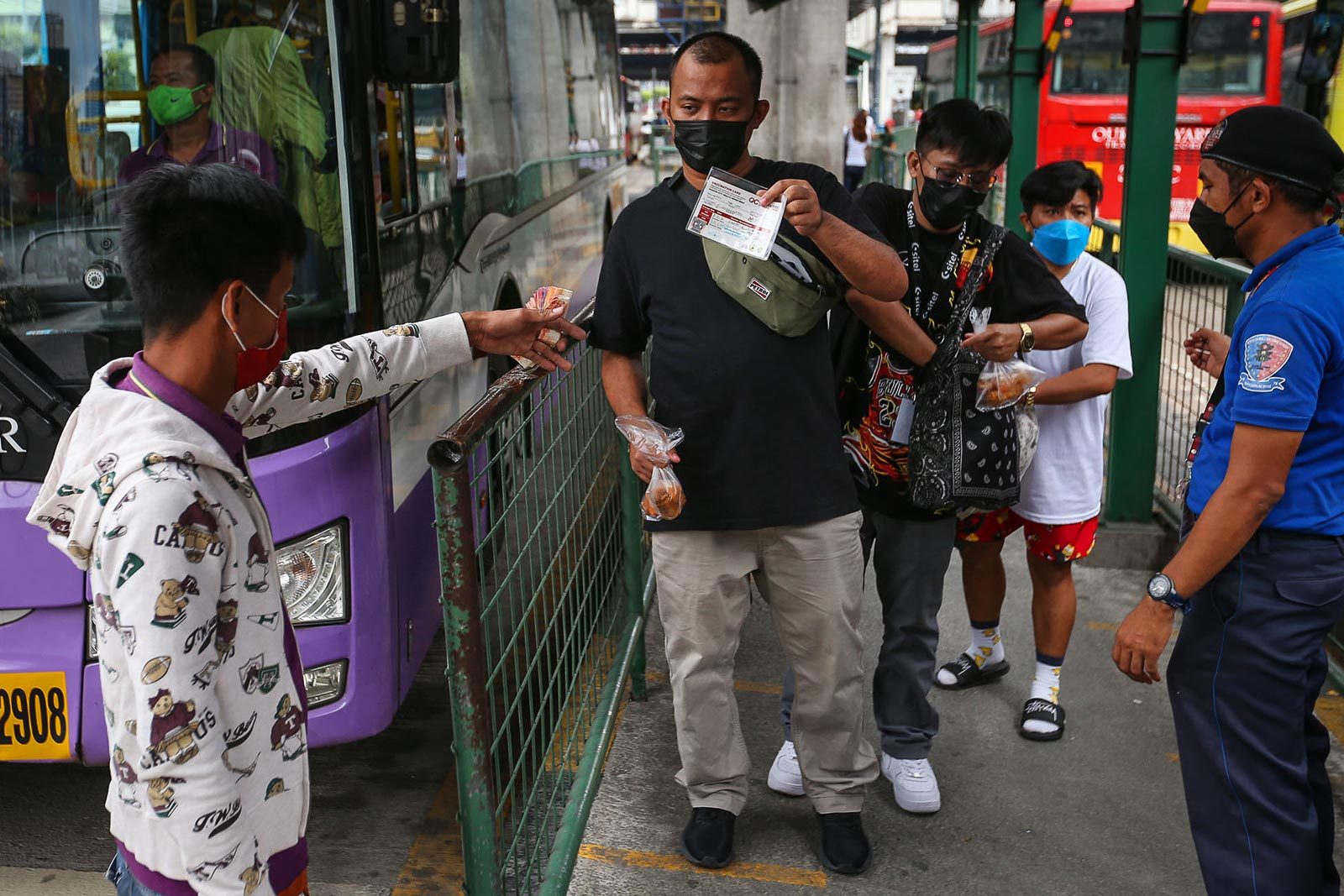
After infections in the Philippines peaked to their highest levels yet in the pandemic in recent weeks, the country is now back to a “moderate” risk classification. Reported cases and the national positivity rate have been decreasing, while health officials noted a negative growth rate in cases over the last two weeks.
But daily case tallies are still at higher levels compared to where they were before the extremely contagious Omicron variant fueled a surge in infections.
Here’s what we’re watching this week of January 31, 2022:
Omicron surge among different ages
The recent surge in cases saw infections increase among all age groups – with 18- to 59-year-olds seeing the biggest climb, followed by kids aged less than 5, and then 5- to 11-year-olds.
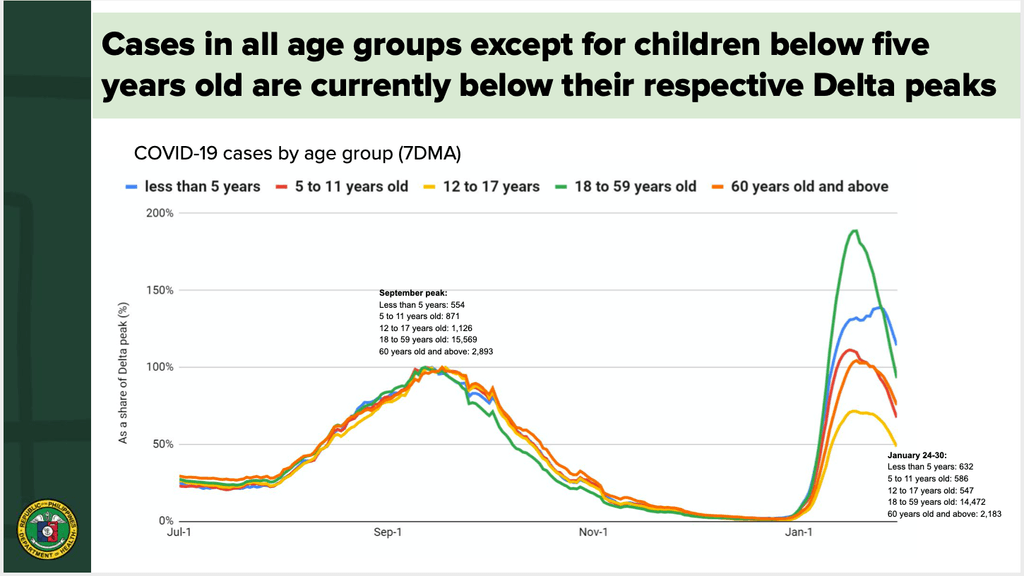
- Infections climbing among those aged 18 to 59 follows similar trends where most cases tend to be found among working age Filipinos, also the most mobile bunch. For this group, cases tracked during the Omicron peak were over 150% of the peak in cases for the group during the Delta wave.
- Infections among children less than 5 years old surpassed the number of cases in the group during the Delta peak (554 cases), and continued to hover above it (632 cases) in the last week.
- Among minors aged 12 to 17, cases during this Omicron-fueled wave were also over 100% of its Delta peak.
- The same was true for senior citizens, with cases slightly over 100% of its Delta peak, although cases have fallen below Delta-levels from January 24 to 30.
- One takeaway: The figures again underscore how important it is to keep transmission levels low most especially for vulnerable members in communities, including senior citizens and children.
- Seniors and kids are vulnerable in different ways. The elderly have higher risks of severe illness and death if exposed to the virus, while a segment of children are among those in the country who are still ineligible to get vaccinated.
- Kids aged 5 to 11 will be able to get vaccines in just a few days’ time. But for children younger than 5, it’s still a waiting game.
- Meanwhile, 4 million of the 10.26 million seniors have yet to get a single dose.
Spotting hurdles in PH’s vaccine drive
Since the first batch of COVID-19 vaccines touched down in the country nearly a year ago in February, over 126 million doses have been administered. Despite this, the Philippines may not be able to reach its goal of vaccinating at least 70% of the population by March.
Currently, 53% of Filipinos have been fully vaccinated. At the current pace of vaccinations, tracking by Reuters showed it will take another 49 days or seven weeks to administer doses to another 10% of the population.
- Rappler’s 2-part series in collaboration with public health research firm EpiMetrics highlighted key barriers in the government’s vaccination drive:
- Majority of doses have been concentrated in Metro Manila and Luzon, at the expense of the Visayas and Mindanao. Latest government data showed nearly half of all regions in the country have yet to see at least 70% of their populations fully vaccinated.
- Getting doses to more provinces quicker is held back by how fast local government units can administer vaccines. But in areas where local health systems can least afford a surge in cases, doses are hard to roll out due to decades-old problems like a lack of health workers, weak distribution systems, and the absence of primary health care centers.
- Even in areas where supply is readily available, it can be difficult to get vaccinated if workers aren’t given the leeway to head to vaccine centers during work hours or waiting times are too long for seniors.
- Hesitancy has markedly decreased in recent months, but about 14% of adult Filipinos are still holding out. It’s still worth reaching out to this group, considering the entire Philippine population may need to get vaccinated to protect everyone from severe disease and death.
With uptake yet to reach 70%, and later 90%, of the population, other health measures like mask-wearing, observing proper ventilation, and practicing physical distancing will continue to reduce risks of getting and spreading COVID-19.
Variant tracking
Infections continue to fall in the Philippines and, as more parts of the world open back up, it can be difficult to observe quarantine measures locally, more so with it being almost two years since the pandemic was officially declared. One big reason to keep observing health measures: COVID-19 is still evolving.
- The World Health Organization said it was monitoring four subvariants of Omicron, including BA.2, which has been dubbed as “stealth Omicron.”
- Ten weeks since Omicron propped itself onto the global scene, 90 million cases were reported – more than in all of 2020 – WHO Director-General Tedros Adhanom Ghebreyesus said in a press conference Tuesday night, February 1.
- This in addition to the 30 sublineages of Delta the global health body said it was tracking weeks earlier.
- Even if Omicron seems to be outdoing Delta, this doesn’t necessarily tell us where Delta will end up. The Atlantic reported, “In the same way that Omicron was not a descendent of Delta, the next variant we tussle with won’t necessarily sprout from Omicron.”
- With huge swaths of the world still unvaccinated and transmission still high, all possibilities for the virus are still open and worth preparing for, the Atlantic noted.
- At the same time, though Omicron has continued to inch out Delta in many parts the world, Delta – and other variants – are still circulating, causing infection, and putting people in hospitals.
Catch up quick: The government is set to begin administering the jabs to kids aged 5 to 11 beginning Friday, February 4. For parents and guardians, here’s what you need to know:
– Rappler.com
Add a comment
How does this make you feel?
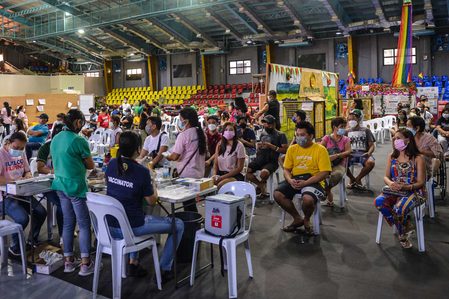

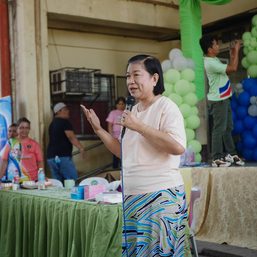
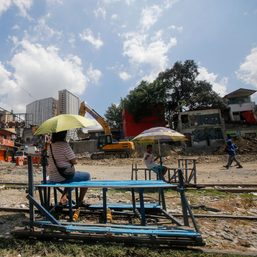

![[OPINION] Beyond infrastructure: Ensuring healthcare access for the poor](https://www.rappler.com/tachyon/2024/03/tl-healthcare-access-03402024.jpg?resize=257%2C257&crop_strategy=attention)
There are no comments yet. Add your comment to start the conversation.